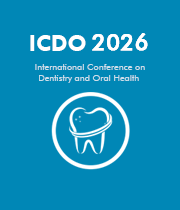Orthognathic Surgery
Orthognathic Surgery, a transformative intervention in oral and maxillofacial surgery, addresses complex jaw and facial irregularities that go beyond cosmetic concerns. This intricate procedure is tailored to correct issues like underbites, overbites, open bites, and asymmetry that may impact both the aesthetic and functional aspects of the face. Patients undergoing orthognathic surgery typically embark on a comprehensive journey that begins with detailed diagnostic assessments, including digital imaging and 3D models, to precisely plan the surgical corrections. Collaborative efforts between oral surgeons and orthodontists are common, as pre-surgical orthodontic treatment is often part of the overall plan to optimize alignment. The surgery itself involves precise adjustments to the jaw bones, necessitating careful planning and skilled execution by the surgical team. Post-surgery, patients may undergo a period of recovery and orthodontic refinement to ensure the final results meet both functional and aesthetic goals.




Title : A systematic review on the early detection of oral cancer using artificial intelligence and electronic tongue technology
Maryam, Kardan Dental Clinic, Iran (Islamic Republic of)
Title : Cutaneous, Cranial, skeletal and dental defects in patients with Goltz syndrome
Ali Al Kaissi, National Ilizarov Medical Research Center for Traumatology and Orthopaedics, Russian Federation
Title : Artificial intelligence in clinical decision making in third molar surgery
Tannaz Pourlak, Tabriz University of Medical Sciences, Iran (Islamic Republic of)
Title : The role of vitamins and nutritional supplements in temporomandibular joint disorders (TMDs) among Yemeni population
Muharrm Abdo Bazza Othman, Yemen Dental Association, Yemen
Title : The nature and management of dental erosion in patients with bulimia nervosa
Maya Fahy, The Royal Victoria, School of Dentistry, United Kingdom
Title : Evaluating hygienist follow up for head and neck oncology patients in secondary care: Results from a two cycle audit
Peter Basta, Newcastle Dental Hospital, United Kingdom